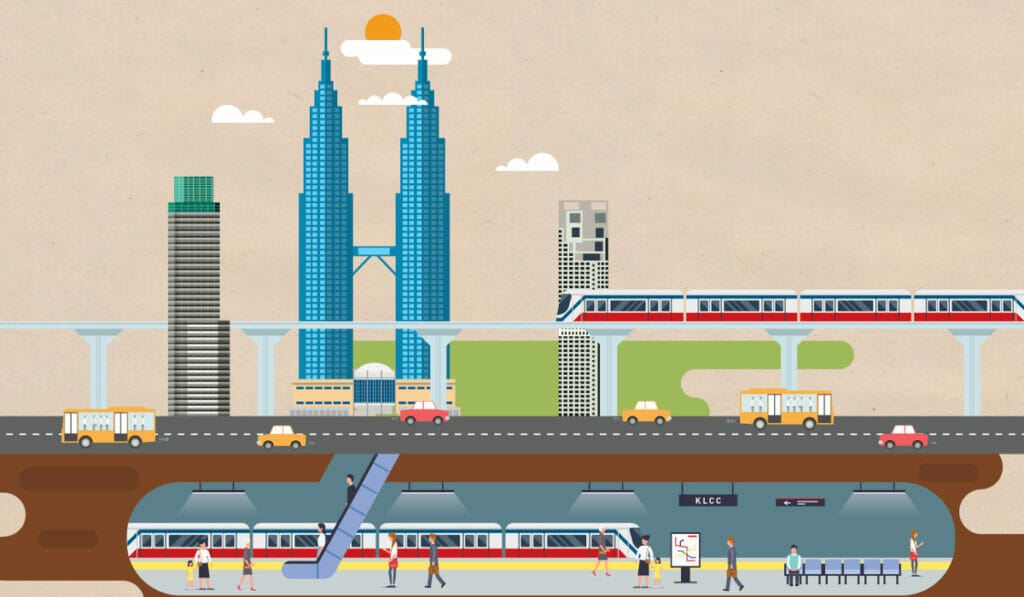
THE PROBLEM
First, let’s start with the problem. Why is getting in and out of KL during rush hour such a nightmare? To answer this question, I spoke to the Mayor of Kuala Lumpur, Datuk Seri Hj Mhd Amin Nordin Abd Aziz. “We have a population of about 1.7 million people already in Kuala Lumpur. And every day, maybe 2.5 to three million cars stream into KL from neighbouring Selangor and up to as far as Negeri Sembilan for work. About 80 per cent of these cars have only a single driver in them. So, from 7am to 9am and from 5pm to 7pm, there are simply too many cars in the city.â€
Throughout the years, there have been efforts to try and alleviate the traffic, including proposed flexible working hours, along with the widening and re-structuring of the roads within the city. But come 2017, we are still faced with the same situation. A good indicator of why that is comes from a report from the Malaysian Automotive Association: where in 1980, a total of 80,420 new passenger cars were registered in the country, in 2016, that number was 514,545. What’s worse is that, now, as Datuk Seri Amin Nordin says: “We cannot expand the roads anymore. It has reached its maximum capacity.â€
Compounding this fact is the low number of public transportation users. Of all commuters within Klang Valley, only 22 per cent have adopted this mode of transport. Sure, this number is double what it once was a few years ago but, compared to Singapore’s 62 per cent and Hong Kong’s 89 per cent (according to the World Bank report in 2015), we still have a long way to go. At the time this article was written, there are nine rail lines servicing the greater Kuala Lumpur area but by far the biggest problem public transportation faces is the first and last mile connectivity.
The entirety of this problem can be summed up within the fact that, back in the day, urban planning wasn’t something that was given much attention. Where the countries with the most liveable cities take urban planning seriously, in Malaysia there is a misconception that urban planners are there to just sub-divide the land. Dr Nikmatul Adha Nordin, a coordinator at the Department of Urban and Regional Planning in University of Malaya’s Faculty of Built Environment, explains: “Traditionally, city planning was done by zones. Residential, industrial, commercial – everything is separated. However, this is not a sustainable way of planning because a city expands and this further encourages commuting from one zone to the next.â€
With the lack of proper planning in the beginning, the current solutions to traffic congestion had to be fitted in as and when it was necessary. Like the time the authorities suddenly changed most of the roads in Kuala Lumpur into one-way streets to try and alleviate the congestion. And looking back to that time when the MRT lines were being built above ground, I remember it caused massive traffic jams around the Klang Valley. Wouldn’t it be so much more convenient to just build it underground? But “because KL is an old city, there are a lot of utility lines underground and to build a tunnel is about triple the cost of going above ground,†says Datuk Seri Amin Nordin. However, he adds confidently: “We are one of the cities that have the money and capacity to improve the living conditions in Kuala Lumpur.â€



